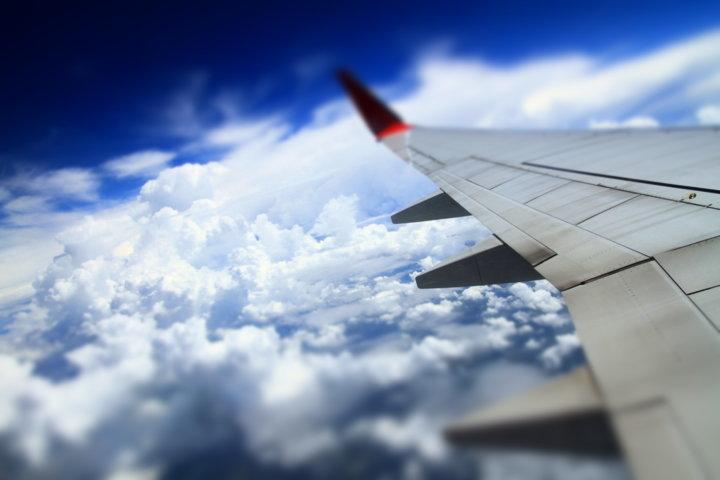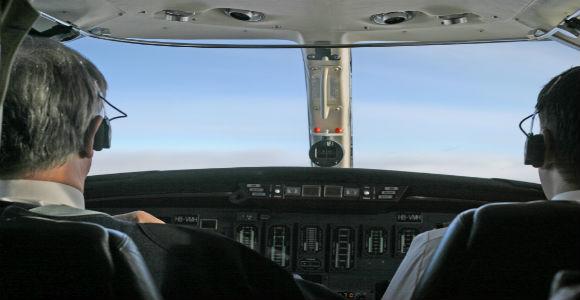As The Pundits Have it, Our Airlines Are Running out of Pilots. But is this True?


Word of a looming pilot shortage has been making headlines. The Wall Street Journal, National Public Radio and most of the major network news channels have carried the story.
It’s amazing how the media can pick up and run with something, regardless of how unclear or inaccurate the premise is.
What does “pilot shortage” really mean?
The idea that airlines will soon face an “acute shortage of pilots,” as a Journal piece recently put it, is both true and untrue. It depends very much on which part of the airline industry we’re talking about. We need to draw a sharp divide between the major carriers and their regional affiliates. It’s the latter that may have a problem on its hands.
The major carriers will always have a surplus of highly qualified candidates to choose from. They are able to cull from from the top ranks of the regional carriers, as well as from the military. The impending wave of retirements won’t come close to depleting a supply of senior, highly experienced regional airline pilots who would kill for a slot with a major. That is, if and when they are hiring. Attrition is slow, and at the moment there are more than 3,000 pilots on indefinite furlough from the likes of American, United, and US Airways, some of whom have been laid off for ten years or more. A friend of mine who lost his job at TWA and American recently took a position in Dubai because decent US flying jobs are so scarce. He’s one of many.
At the regionals it’s a slightly different story. By regionals we’re referring to the numerous subcontractors who operate smaller jets and turboprops on behalf of the network carriers: those myriad “Connection” and “Express” carriers. This sector of the industry has expanded tremendously over the past twenty years or so, and now accounts for an astonishing one-half (53 percent to be exact) of all domestic departures in the United States.
Pay and working conditions are often terrible at these companies, with salaries starting at around $20,000 annually — sometimes less. And the growth of this sector, together with limited hiring and low rates of attrition at the majors, means that pilots are figuring out that a job with a regional often means an entire career with a regional.
Meanwhile, the FAA is about to enforce tougher hiring standards for entry-level pilots. Over the past two decades, as the regional sector grew and grew, thousands of new pilot jobs were created. To fill these slots, airlines sharply lowered their experience and flight time minimums for new-hires. Suddenly, pilots were being taken on with as little as 350 hours of total time, assigned to the first officer’s seat of sophisticated regional jets. Twenty or thirty years ago this would have been unthinkable. Then came a rash of accidents, including the Colgan Air (Continental Connection) disaster outside Buffalo in 2009. Regulators began taking a closer look at hiring practices, eventually enacting legislation that that will mandate higher flight time totals and additional certification requirements for new-hires.
(The new rules may sound highly restrictive to young pilots, but really all they’re doing is returning things to historical norms. My first job with a regional — “commuters” we called them in those days — was in 1990. Competitive applicants at the time had between 1,500 and 2,000 hours, and most of us had an FAA Airline Transport Pilot certificate as well. And that was to fly an unpressurized 15-seater.)
An aspiring aviator has to ask, is it worth sinking $50,000 or more into one’s primary training, plus the time it will take to build the necessary number of flight hours, plus the cost of a college education, only to spend years toiling at poverty-level wages, with at best a marginal shot at moving on to a major?
For many the answer is no. A growing number of regional pilots are bailing out of the business altogether, and the replacement pool is drying up.
How much it dries up, however, remains to be seen.
It’s somewhat telling that virtually no regional carriers have raised their salaries or benefit packages to levels that would appear aimed at retaining or attracting pilots.
Keep in mind, too, the willingness of pilots to suffer for their art, so to speak. There will always be pilots – some would say too many of them – happy to endure almost anything for the sheer thrill of the job. If you ask me, there will be plenty of experienced crewmembers out there in the foreseeable future, hungry for work, and airlines big and small can continue to expect a hundred or more applications for every available job.
Patrick Smith is an airline pilot and the host of www.askthepilot.com. His new book is Cockpit Confidential: Everything You Need to Know About Air Travel
For a deeper look at this topic, including its implications on safety, see the author’s earlier column in the magazine Salon.























RE: Ins "The majors are now poaching from the regionals" The majors have always poached from the regionals. And it has not been hard because the regionals don't pay well. The regionals may have trouble filling opening in the future if they don't raise their pay. RE: CG, I got became a pilot in 1990. I agree with all of your point.
I became a pilot in 1988, at which point I started paying attention to the talk of impending "pilot shortages". Except for a couple years post-9/11, there has always been an "impending pilot shortage" with a big retirement bubble just around the corner according to a constant stream of articles in aviation trades, yet it has never materialized. At one point it at least sounded rational, there were a bunch of pilots trained in Vietnam who were approaching mandatory retirement, but again it never materialized. At this point, I take a skeptical view of this kind of talk. As a former military pilot I know of a huge pool of former military pilots all with many thousands of hours who aren't currently flying. Most of them are working as consultants in the defense industry, many times unrelated to aviation, because while they'd rather fly they're adults with families who aren't going to work for $20K/year. Behind them there is a big pool of active duty pilots who would fly civilian but get paid so much more to be a military officer that they stay in. Behind them there is an even bigger pool of helicopter pilots with ATPs and a lot of hours. If there is ever a true shortage, meaning regionals start paying good wages, these pools will flow back in (as well as the pool of furloughed pilots, U.S. pilots working in the Middle East, and several other pools of highly qualified pilots not currently flying or not flying in the U.S.) and the shortage will go away. I feel sorry for the younger generation drinking the cool-aid of the shortage just around the corner, most of whom are doomed to a pretty dismal career as a regional pilot.
If I were a personnel forecaster at a US carrier, I would be very worried about competition for young pilot talent in Asia, the Middle East, and Oceania. Demand over there is exploding, a journeyman aviator can find him or herself in the right seat of a mainline commercial airliner years before one can expect to graduate from RJ hell in the US, and the pay is better by a factor of 3 or 4. And they welcome American talent over there. It may not be the onerous new 1500-hour requirement that cripples the personnel pipeline in the US, but simply the international free market.
How long ago was this written? The majors have recalled all their pilots, they are all scheduled for training, or have declined or deferred recall. The majors are now poaching from the regionals. Regionals have stopped growing, and have begun to shrink, reducing flying in some markets that have full flights. Regional management complains that they can't find enough pilots to replace those leaving. And we are still a few years from the big retirement bubble. You may love flying, but that love is getting rare among teenagers. New pilot starts continue to drop, while demand continues to grow. Demand is growing rapidly in some parts of the world where the economies are not still feeling the effects of the recession. That recovery is also coming in the U.S., probably about the time retirements spike. $50,000 for flight training? Most pilots are looking at $100,000, and new pilots I've talked to say closer to $200,000 for everything including living expenses. If an industry was anticipating a big increase in need for pilotanium, at the same time all the pilotnanium mines were running out of pilotanium and many had already shut down, you would certainly see a problem developing. Why don't you see this situation as a problem?